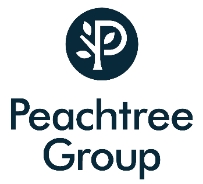 |
The Rezidor Hotel Group: Year-end report January-December
|
Category: Worldwide - Industry economy
- Figures / Studies
This is a press release selected by our editorial committee and published online for free on Tuesday 22 February 2011
Fourth quarter, 2010
RevPAR Like-for-like increased by 6.9% to EUR 61.0 (57.0).
Like-for-like Occupancy was 62.9% (59.0).
Revenue increased by 13.8% or MEUR 25.7 to MEUR 211.7 (186.0).
On a Like-for-like basis Revenue increased by 5.4%.
EBITDA was MEUR 6.9 (9.7), and EBITDA margin was 3.3% (5.2).
Loss after tax amounted to MEUR -6.8 (-0.3).
Basic and diluted Earnings Per Share amounted to EUR -0.05 (-0.00).
Twelve month ending December, 2010
RevPAR Like-for-like increased by 4.6% to EUR 62.8 (60.0).
Like-for-like Occupancy was 65.0% (61.1).
Revenue increased by 16.0% or MEUR 108.5 to MEUR 785.7 (677.2).
On a Like-for-like basis Revenue increased by 3.2%.
EBITDA was MEUR 31.5 (4.9), and EBITDA margin was 4.0% (0.7).
Loss after tax amounted to MEUR -2.7 (-28.2).
Basic and diluted Earnings Per Share amounted to EUR -0.02 (-0.19).
Cash flow from operating activities was 49.0 (-6.1). Total available cash
at the end of the period, including unutilised credit facilities, amounted
to MEUR 129.3 (97.0).
Other developments
Circa 500 new rooms were added into operations in the fourth quarter and ca 7,200 during the year.
Circa 1,800 rooms were signed in the fourth quarter and ca 8,100 in 2010. All of the new rooms signed during the
year were managed or franchised.
The Board of Directors proposes no dividend (EUR 0.00).
Comment from the CEO
- A year of record openings and strongly improved cash-flow
2010 has been a very positive year for us. We experienced a recovery in all geographical
regions and a robust increase in margins as a result of the RevPAR improvement and the
cost saving measures initiated in 2008/2009. We also reported a substantial increase in
free cash flow coming from good operating results, improved working capital and tight
CAPEX control. Rest of Western Europe led the recovery throughout the year and we
witnessed significant RevPAR increases in key markets such as Germany, France and
Benelux.
The fourth quarter, however, recorded a drop in margins compared to last year. This was
mainly the result of exceptional costs, such as higher variable salaries due to better than
expected performance during 2010, allocation of marketing costs to the quarter and oneoffs in the Nordics. The extraordinary costs in the quarter do not represent an increase in
the cost base going forward.
We have continued with our growth strategy, and despite the continuation of difficult trading, 2010 was
another record year of new openings. 7,200 new rooms were added to operations, and we continue to have one
of the largest pipelines in the industry. Going forward we will continue adding new hotels to our portfolio and
invest in further enhancing the quality of the existing hotels.
Kurt Ritter, President & CEO
Market Development
Since the beginning of 2010, the hotel industry has
benefited from the improvement in the economic
environment. The overall pattern in most countries in
Europe points to a steady increase in RevPAR over the past
twelve months. During the first half of the year, growth
was primarily driven by occupancy. The second half,
however, witnessed a modest increase in room rates,
which contributed to the RevPAR growth. This
strengthening performance was due to many different
factors in different markets; some of which will not be
repeated in 2011.
Western Europe led the upturn - particularly Germany,
France, Benelux and the UK. All key destinations in this
region have experienced strong or even exceptional
RevPAR growth. In most cases the growth has followed
the economic recovery of each of these countries, but has
sometimes also been helped by other factors. In Germany,
for instance, the reduction in the VAT rate helped to boost
occupancy and rate. An equivalent factor does not exist in
2011 and it is therefore reasonable to expect a somewhat
slower development in Germany during this year. The UK
had a strong performance in 2010, driven by double-digit
RevPAR growth in London, which was heavily supported
by international tourism due largely to the strong euro and
weak pound. Regional UK fared less well, as these regions
have a much higher share of domestic customers. The
effects of government spending cuts and the increase in
the VAT rate in the UK remain hard to predict at this time.
In the Nordics, Sweden was the only country that marked
a solid improvement during the year, supported by the countrys strong economic recovery. Stockholm emerged
as the star performer, thanks to a high proportion of
domestic business and leisure tourism during the summer.
Denmark and Norway had a weaker economic recovery
and were also affected by an increase in room supply
during the year, which had a negative effect on RevPAR
development.
Eastern Europe has noted healthy occupancy development
since this summer but is still lagging behind on room rate
growth. The Middle East reported an overall weak result
with mixed performances observed in different countries.
RevPAR
Fourth quarter, 2010
Three of the four geographic segments reported a like-forlike RevPAR growth. The biggest growth was in ROWE with
13.4% followed by MEAO with 9.6% and EE achieved 2.5%.
The Nordics was down -2.8%.
The significant increase in ROWE was driven by an AHR
increase of 7.4% and an occupancy increase of 5.6%. All
countries experienced strong growth in demand during
the quarter.
For MEAO the RevPAR growth was driven by an occupancy
increase of 14.8% which compensated for AHR decrease of
4.5%. Except South Africa, all key countries experienced a
strong growth in demand during the quarter.
In EE the growth was positive but not as strong as in the
third quarter and was mainly on account of higher
occupancy. The strongest performance was witnessed in
the Baltics were RevPAR grew by 14.1%.
In the Nordics, the RevPAR was lower (-2.8%) as Denmark
benefitted from the UN Climate Change Conference in
December, 2009, as well as a decline in Norway during the
period of -2.2%.
The RevPAR development for the quarter, split into likefor-like growth, FX impact, and new openings is presented
in the table below.
USD linked currencies in the Middle East (ca 9%), the GBP
(ca 5%) and the NOK (ca 4%).
Twelve month ending December, 2010
All customer segments noted an increase in volume
compared to 2009. As a result, occupancy grew by 6.3 %.
Combined with a marginal AHR decline of 1.6% this
resulted in a like-for-like RevPAR growth of 4.6%. The
strongest development was seen in ROWE.
The RevPAR development for the twelve month period,
split into like-for-like growth, FX impact, and new openings
is presented in the table below.
|
|









